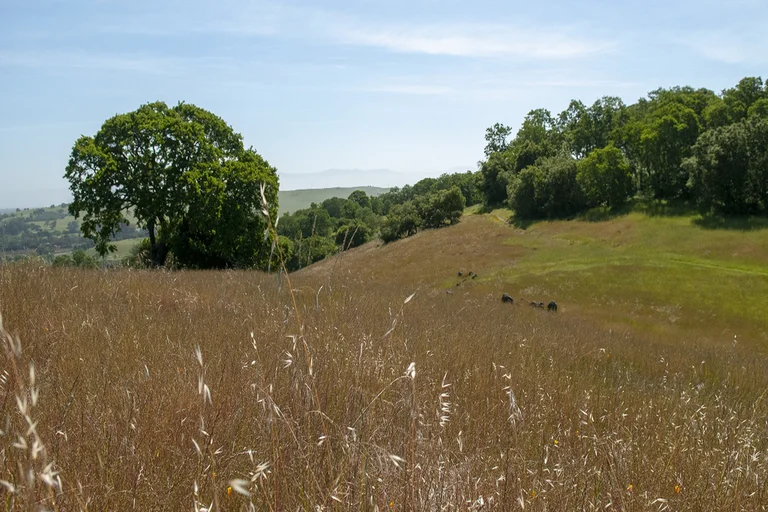
How To Restore Native Grasslands Using Seeding Technique
Native grasslands are one of the most important ecosystems on Earth. They give habitat for many animals and help prevent soil loss support clean water and store carbon to fight climate change. However, many native grasslands have been lost due to farming, urban development, and invasive plants.
Restoring these grasslands can return nature’s balance, improve the environment & community benefits. One of the best ways to restore native grasslands is by using seeding techniques. In this blog, you will learn everything you need to know about restoring native grasslands using seeds, explained simply and clearly.
Native Grassland Restoration Guide:
Learn how to restore native grasslands using simple seeding techniques. A beginner-friendly guide on planting native seeds.
What Are Native Grasslands?
First, we should know what native grasslands are. Native grasslands are areas mostly covered by grasses and wildflowers that grow naturally in a certain area. These plants are called native kind because they have lived in the area for thousands of years and are adjusted to the soil and climate of the area.
Why Use the Seeding Method To Restore Native Grasslands?
One of the best ways to bring return native grasslands is by planting seeds directly into the ground. This process is called seeding. This method is cheaper & easier than transplanting mature plants & helps grasses & wildflowers grow naturally over time. Seeding is especially useful for covering large areas & creating various ecosystems that support a wide variety of plants and animals.
Preparing the Land for Seeding:
Before planting seeds it is necessary to prepare the land carefully. To start with examine the soil to make sure it is healthy & free of overgrown vegetations.Cause invasive species rival with native plants and can prevent them from growing, their removal is essential.Clearing away trash & loosening soil surface helps to create an ideal setting for seeds to settle and grow. In some conditions adding organic matter like compost improves soil health and provides nutrients for young plants.
Choosing the Right Native Seeds:
Choosing native seeds that grow naturally in your area is the secret to a successful restoration. These plants have a big chance of surviving without an additional care because they have adjusted to the local soil & climate. A balanced ecosystem is produced & biodiversity is supported by using a mixture of native grasses and wildflowers. Native seed mixes that are right for specific areas are available from many local nurseries and environmental organizations.
The Best Time to Plant Grassland Seeds:
Timing play a vital role in seed success. Because rainfall-generated soil moisture promotes natural seed growth, early fall or late winter is often the ideal time of year to plant native seeds. Because seeds can dry before they grow avoid planting during hot & dry weather. The best year time for planting in your area can be found by speaking with local experts.
How to Spread & Cover Seeds:
You can spread seeds by hand or use a seed spreader. For Example:
Seeds should be spread evenly over prepared soil to prevent clusters or visible areas. This can be fix by hand for small areas or with a seed spreader for larger fields. Mixing seeds with sand or sawdust before spreading helps with even distribution. Once spread covering seeds lightly with soil or mulch protects them from birds and drying out. Most native seeds need to be near the surface to get enough light for germination.
Watering & Caring for New Seeds:
After seeding, watering is important, especially if there is enough rainfall. When seeds require moisture start to grow, too much water can cause seedlings to root or wash away. It is best to water sparingly and to keep the soil damp but not soggy. Regular maintenance is necessary once seeds begin to grow to prevent invasive weeds from reoccurring and to protect young plants from foot traffic or grazing.
Benefits of Restoring Native Grasslands:
Restoring native grasslands benefits wildlife by giving birds, butterflies & other creatures food & shelter. Healthy grasslands enhance soil by adding nutrients and preventing loss. They also filter rainwater, improving water quality & store carbon underground to reduce greenhouse gases. Beyond environmental benefits, restored grasslands create beautiful natural spaces for people to enjoy and learn from.
Restoring native grasslands does not have to be complicated. By using local seeds, preparing the site, selecting the right planting method, & supporting seedlings with thoughtful maintenance, anyone can help bring these ecosystems back to life. Over time, a once-bare field can transform into a thriving, diverse prairie benefiting wildlife, soil, & community.
Read more related Article > https://www.climatechallange.com/10-interesting-facts-about-the-savanna-grasslands/